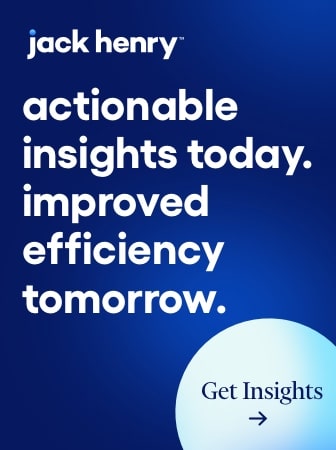“He had his cash money, but you couldn’t pay for food with that. It wasn’t actually illegal to have the stuff, it was just that nobody ever did anything legitimate with it.”
—“Count Zero” (1986) by William Gibson
This predictive cyberpunk novel’s viewpoint that cash will come to be a fringe thing may be coming sooner than many bankers think.
In 2022 the use of cash declined by its largest margin in the history of cash. It was perhaps the largest decline on record at least since 650 BC.
But this decline is scattered. In the U.K. cash declined a whopping 35% in the first year of the pandemic, 2020. Even prior to the pandemic, cash use had been declining in the U.K. by approximately 15% per year, at least since 2017.
Globally several countries are now on the verge of being functionally cashless. That means that while cash is still available in the economy, both individuals and businesses can quite happily operate in a totally cashless environment. For countries like Australia and New Zealand, where the ability to use cash is still considered a basic human right, this presents a functional problem for government and banking.
There are many government, central banking and industry-level studies that have shown the overall cost benefits of electronic payment systems over cash. A 2017 study at Purdue University, for instance, that looked at three global markets — Sweden, the United States and India — concluded there are widespread benefits to cashless operations for society at large.
To be clear, most governments, at least privately, now consider cashless economies a clear policy imperative and standard. Cashless economies have much higher rates of income tax compliance, much lower rates of financial crime and fraud, and much lower banking system costs related to processing of cash. The cost of regulation and supervision in the banking system also declines dramatically in cashless environments.
But in places like the U.S., the debate continues. Last year, in ATM Marketplace, Triton Systems’ Daryl Cornell summarized things this way:
“Cheerleaders for cash argue that payment choice is a fundamental right. Supporters point out that cash works, even during disruptions to the digital payment infrastructure. Cashless advocates will argue that the use of cash, particularly for purchases under $100, continues to decline and that non-cash payment methods are far more convenient. Both positions are correct.”

Modern Customer Journey Mapping
Customers navigate a multi-touch, multi-channel journey before interacting with your brand. Do you deliver successful and seamless experiences at every touchpoint? Download webinar.

Register for Discovery2024 Conference
Join us August 8th for Discovery2024, your gateway to the strategic insights and human connections you may need to navigate the evolving financial landscape.
Reliance on Cash Increasingly Brings Expenses in its Wake
Yet the costs associated with cash use are only increasing as more businesses and consumers trend towards digital acceptance.
In “A Case Study on Monetary Fraud in a Cashless Economy,” Iyer et al, 2017, the Purdue study mentioned earlier, a statement is made that continues to stand up:
“Findings show that losses suffered due to abuse of cash as a payment instrument are much higher than that of card instruments. The cost of implementing and maintaining a system for electronic payment instruments are less than half of the cost of currency operations. A society with less cash could hence potentially be more resistant to abuse of payment instruments and more cost efficient as compared to a cash-based one.”
Access to cash remains a core social problem when there is a large unbanked population.
In markets like the U.S., where access to identity documentation (that is required for opening a bank account) remains tenuous for a small, but significant percentage of the population, the decline of cash use is problematic. Covid boosted digital financial inclusion, with the global number of unbanked declining rapidly from 1.6 billion to 1.4 billion during the pandemic years. Since 2010 we have reduced the number of globally unbanked from 2.7 billion people, but this is through the use of mobile wallets, identity frameworks, and, more recently, real-time pay-by-bank infrastructure.
Top cashless countries, ranked by functional payments capability
The U.S. loses more than $1 trillion a year in tax revenue due to tax avoidance practices, including activity in the untaxed cash economy. According to the national taxpayer advocate’s estimates, 52% of this revenue gap arises because of under-reporting by self-employed taxpayers, driven in large part by cash payments. For this reason, there is a very strong imperative for a cashless economy in markets like the U.S.
While some business owners might think the 3% fee for processing credit cards is a significant cost, research over the last decade has shown that cash handling costs U.S. retailers a great deal more —between 4.7% and 15.3%. This means for every $100 sale a business is paying between $4.70 and $15.30 just to manage their cash, well above card processing or ACH fees. In the U.S. it is estimated by the National Retail Federation that roughly $50 billion of the total $112 billion lost in retail from “shrinkage” in 2022 was simple cash theft, often by employees. Between 2018-2021 ATM cash withdrawals in the U.S. declined at a rate of 10.1% per year, falling to 3.7 billion (2021).
Read more: 9 Lessons Banking Has (or Should Have) Learned from Fintechs
Would an End to Cash Erode Financial Inclusion?
Eliminating financial exclusion, along with remaining reliance on cash, should be a goal of every modern economy today. But it is certainly a complex issue that not only relies on the broad acceptance of digital payments, but also on the basic availability of identity infrastructure, along with mobile penetration, general digital inclusion efforts, and affordability of internet access. Hence why the Merchant Machine’s study on cash reliance, cited earlier, recorded both unbanked numbers and internet access as core metrics in assessing cashless functionality globally.
Just the term “unbanked” is somewhat loaded, however. The Federal Reserve largely defines the word in terms of lack of access to financial products, specifically credit-related products. Australia and the U.K. tend to define this segment of citizens more sensibly, in my view, as “vulnerable consumers.” Within lower-income segments the view that banking comes with lots of costs and hidden fees can’t really be argued against, and this still clouds decision making for some when it comes to use of mainstream financial services.
Studies by the Financial Health Network show that unbanked and underbanked Americans spent $189 billion in fees and interest payments on mainly alternative financial services products in 2018 alone. (The most recent FHN study indicates that the figure had risen to $347 billion in 2022.)
The FDIC estimates that for that same year some 63 million Americans fit the category of unbanked or underbanked. That would mean that on average that these vulnerable citizens were paying some $3,000 in annual financial services costs — significantly more than many wealthy Americans pay for access to banking services. And they are likely paying more now.
The 2023 FinHealth study by the Financial Health Network showed that in the U.S. lack of affordable financial services continues to be a chronic problem for financially vulnerable households, with this segment spending 14% of their income on interest and fees, compared with 1% for financially healthy Americans.
Making basic banking affordable and transparent has not been an overarching goal of the traditional banking industry in economies like the U.S., Australia and the U.K. Most traditional banks talk about the unattractive nature of lower-income households in terms of margin and push this back on policymakers to solve, while offering certain programs to appease the various stakeholders involved.
Mobile wallets, however, have shown much greater operational cash efficiency on basic day-to-day banking functions. Players like MPesa, PayTM, Alipay, WeChatPay, WeBank and NuBank have shown the ability to provide a comprehensive range of financial services to lower- and middle-income (LMI) households while remaining not only commercially viable, but showing strong growth and referral metrics. This modality shift provided by wallets has allowed us to reform thinking around broader financial inclusion, specifically when we have historically argued the cost of banking and payments infrastructure.
This is one of the reasons for the more rapid decline in cash use across the globe today. Mobile wallets are finally giving access to affordable, basic banking services — something that has eluded the traditional industry. Mobile wallets are the greatest improvement in financial access in the last hundred years, and the broad success of such will inevitably drive towards the minimization of cash.
Read more: Consumers Have Embraced Digital Wallets. But They Also Want Them to Be Better

Cashless is Coming. Stay Alert for the Ripple Effects
The evidence is clear. On a trending basis, while some countries still rely on cash, electronic payments are increasingly being adopted everywhere we look, whether in mature or developing economies. This is largely powered by the relatively cheap availability of mobile phones, and growing use of mobile money and wallets.
There’s no data to suggest that this will slow, or that certain geographies will be immune. (Although Germany and Japan are expected to take their sweet time with moving away from cash due to cultural norms.)
The U.S. is slower in this trend, but this is mainly due to the fact the U.S. is 10 years behind the likes of Australia, New Zealand, China, India and others when it comes to real-time payments and mobile wallet adoption.
The next logical advances in payments will be AI-based. Businesses and individuals will allow artificial intelligence to manage certain elements of their financial lives.
These coming advancements will absolutely be cashless. Smart contracts and smart wallets won’t use fiat currency, nor will they sit on banking core systems.
However, this doesn’t mean cash is going away overnight. In fact, we’ll likely see attempts to “save” cash by politicians responding to public outcry. And this will likely occur well beyond the stage where cash use remains practical for most citizens. Those reliant on cash will become more and more isolated in terms of their options and critically, more exposed in terms of just general processing and servicing costs.
It is already significantly more expensive for consumers and businesses alike to keep using cash, and that is broadly detrimental. But when lack of digital financial access restricts an individual’s access to medical services, education for their children, government support or other basic services, it’s going to be a far more serious issue.
This challenge will require lots of education around the benefits of electronic payments for those that have resisted to-date. That is the social mission now.
About the Author
Futurist Brett King is one of the original disruptors who created the momentum that commenced the banking industry’s gradual digital transformation and related trends. This article is adapted from his forthcoming book, Branch Today, Gone Tomorrow. The book will be a completely new edition of King’s 2012 book by the same title.







